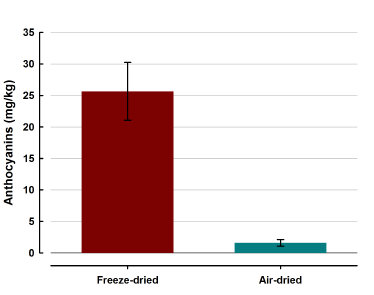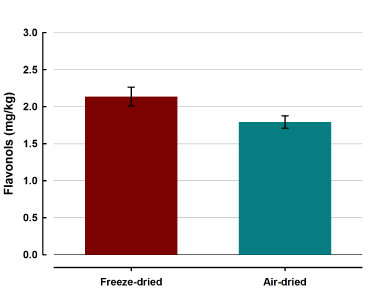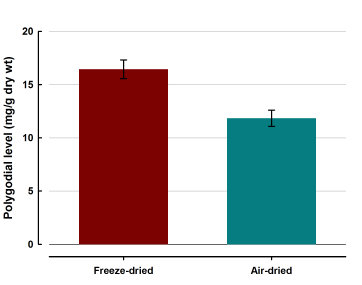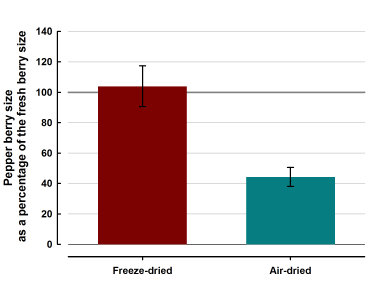
1. Freeze-drying provides the ultimate drying method - maintaining the full size, aroma and flavours of our Tasmanian DEVIL(R) Mountain
Pepperberries. This method also maximises the retention of the berries 'red juice' (the anthocyanins) which can impart glorious
colour to some of your dishes. Our DEVIL pepperberries can be easily crushed and added to your hot or cold dishes, and
can 'bleed' into rice, potatoes, cream, ice-cream, etc. If you soak the DEVIL peppers in water, vinegar or olive oil, the
berries will rehydrate, making a perfect garnish for your dishes.

© Bronzewing Farm 2013-24
Drying. Drying the pepper berries to remove most of the water content (approximately 75% of the berry is water) results in a
product of high quality and a long shelf-life.
2. Warm air drying of the fresh pepperberries at 37-40 degrees Celsius for 50-60 hours produce our dried Tasmanian
DEVIL(R) Mountain Peppercorns suitable for your pepper grinder. The "heat" of the pepperberry (the polygodial) is somewhat concentrated
through this drying method as the berries are shrunken by the process to around 1/3rd of their original size. There is some
loss of other volatiles and the red anthocyanins in Mountain Pepper dried this way.
Our Pepper-Shop has a range of pack-sizes available and lots of information on our packaging and product shelf-life
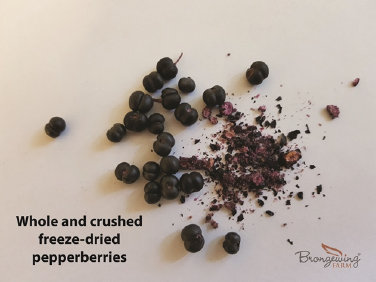
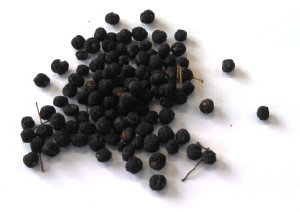
Air-dried peppercorns are shrivelled and rock-hard - needing the use of a pepper grinder or mill.
Charlton Shen's Sydney University Honours project examined the effect of harvest date and drying technique on the levels of key flavour
components in Tasmanian Mountain pepper. Some of his key results are outlined below.
